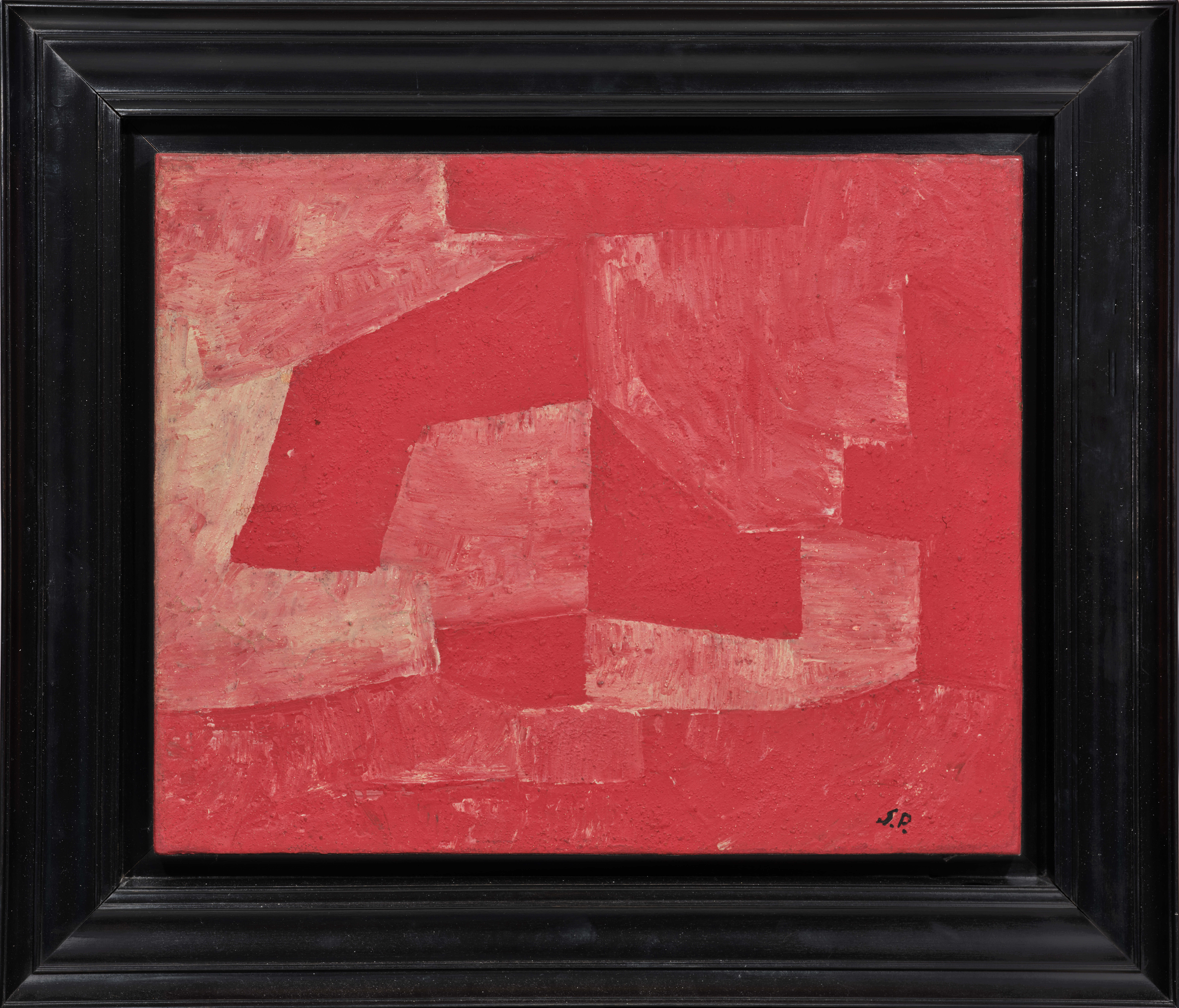Serge PoliakoffComposition abstraite
1966
Oil on canvas
Serge Poliakoff
12.99 x 16.14 in ( 33 x 41 cm )ZoomInquiry - Composition abstraite, 1966
Provenance
French private collection
Galerie Applicat-Prazan, Paris
Literature
Work listed in The Catalog Raisonné
N° archives : 966099
Exhibited
1978, Tokyo, Fuji Television Gallery, « Serge Poliakoff » 19/05-10/06 n°12 cat.
1978, Osaka, Fuji Television Gallery, « Serge Poliakoff » 20/06-20/07 n°12 cat.
Artwork's description
A major figure of lyrical abstraction, Serge Poliakoff brings forth through his compositions a subtle work of pictorial construction.
He won the grand prize at the Biennale de Menton in 1966, and a retrospective was dedicated to him at the Kunstmuseum in Saint-Gall.
Emerging from his contrasting color strokes, he offers here a painting with bright shades featuring a range of more or less deep vermilion reds. Beyond mere assembly, the construction is thoughtful, with shapes that interlock and complement each other to create a beautiful balance.
Poliakoff uses concentrated colors with refined tones and applies the paint to create effects of transparency or texture that will absorb or make the light vibrate.
Artist's biography
Serge Poliakoff, a major figure in 20th-century abstract art, was born on January 8, 1906, in Moscow, Russia.
His artistic journey, marked by intense exploration of forms and colors, led him to become one of the iconic figures of the School of Paris.
Poliakoff grew up in a culturally vibrant and politically charged Russia. Coming from a family of musicians, he initially trained in music but later turned to painting in his adult years. In 1923, he moved to Constantinople and then settled in Paris in 1929, where he began his artistic career. Early influences on Poliakoff included Cubism and Fauvism, but it was through abstraction that he found his true voice.
During the 1940s, Poliakoff formed friendships with artists such as Wassily Kandinsky and Otto Freundlich, expanding his artistic horizon towards geometric abstraction. His works from this period are characterized by balanced compositions of simple forms and vibrant colors. A notable example is "Composition abstraite" (1942), where blocks of primary and secondary colors intertwine in dynamic visual harmony.
In the 1950s, Poliakoff refined his style, adopting a subtler color palette and exploring more nuanced textures. His works from this era, such as "Composition bleue et rouge" (1952), reveal increased emotional depth and technical sophistication. Geometric forms became more organic, sometimes evoking imaginary landscapes or mysterious architectures.
One of Poliakoff's significant contributions to abstract art lies in his ability to merge the intellectual with the sensory. Each painting becomes a unique visual and emotional experience, where colors and forms interact to create compositions that transcend the boundaries of the figurative. "Composition abstraite" (1958) illustrates this evolution with its subtle shades of gray and blue, creating a meditative and contemplative atmosphere.
In the 1960s and 1970s, Poliakoff continued to explore new artistic avenues. His works became more experimental, occasionally incorporating elements of collage and mixed media. "Sans titre" (1972) is an example from this later period where the artist played with contrasts and textures to express renewed conceptual depth.
Alongside his artistic career, Poliakoff was recognized for his contribution to the Parisian cultural scene. He participated in numerous solo and group exhibitions across Europe, expanding the influence of his work. His presence in major institutions such as the Galerie Denise René in Paris and the Stedelijk Museum in Amsterdam solidified his reputation as an innovative and indispensable artist of his time.
Serge Poliakoff passed away on October 12, 1969, in Paris, leaving behind a rich and varied artistic legacy that continues to inspire and captivate art enthusiasts worldwide. His works are found in many public and private collections, bearing witness to his undeniable place in the history of modern art.
